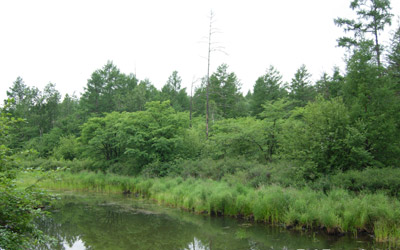
Having moved out of the pasture area in 2001, Namuhai and his family now live in a brick house, using tap water, electricity and telephones. It is more convenient for them to see the doctor and for the children to go to school. "Even if allowed to move back to the grassland, my children wouldn't do that, because life there is inconvenient and they cannot watch TV," Namuhai said.
More importantly, since they only cut grass but do not graze, the grassland has been rested, with 95 percent of which being restored.
Early in 1998, Ordos City carried out an experiment of prohibiting the use of local pastures for one year and a suspension of using the pastures between April-June from then on. Since 2000, the practice has been extended to the whole autonomous region. Meanwhile, rotational pasture use has also been adopted. According to figures of the Department of Agriculture and Animal Husbandry of Inner Mongolia, at present, 47.6 million hectares of grassland has been subject to prohibition and suspension of grazing or rotational use, greatly helping restore and improve the vegetation. Estimates show that in the pasture suspension area of Hulunbeier City, the height of grass is 8-10 cm, vegetation coverage has increased 20 percent and the output of grass increased 20-40 percent.
"Nature has strong capability of self restoration," said Chu Bo, Secretary of the Inner Mongolia Committee of the Communist Party of China. "By reducing human activities, grassland can be restored in only two or three years. We should demand less from the nature."
If You Go to Inner Mongolia
Inner Mongolia is a terrific tourist destination with various topographic features and a diversified ecology. It has abundant tourist resources, from grassland and deserts to forests and lakes. Here you will see more sheep and cows than people.
·What to see
*Grassland: Most of the best grassland is concentrated in the eastern part of Inner Mongolia. Famous grassland tourist areas include Huhenuoer Grassland, Jinzhanghan Grassland and Baiyinhushuo Grassland in Hulunbeier City, Chaersen Grassland in Xing'an League, Zhurihe Grassland and Daqinggou National-Level Nature Reserve in Tongliao City, Baiyin'aobao Grassland and Dalinuoer Grassland in Chifeng City, Wuzhumuqin Grassland and Summer Capital of the Yuan Dynasty in Xilinguole League, Gegentala Grassland and Huitengxile Grassland in Wulanchabu City and Xilamuren Grassland in Baotou City. Xing'an League has the most beautiful green grass and Hulunbeier has the best-preserved grassland in the country.
*Deserts: Badanjilin Desert in Alashan League and Kubuqi Desert in Ordos City, both in western Inner Mongolia.
*Forests: Daxing'anling Forest and Honghuaerji Mongolian Scotch Pine Forest in Hulunbeier City and Diversiform-Leaved Poplar Forest in Alashan League.
*Lakes: Hulunhu Lake and Beierhu Lake in Hulunbeier City.
*Hotsprings: Aershan Hotspring Tourist Area in Xing'an League.
·Amusement: Nadam Fair, the Mongolian traditional sports fair, is held every July and August when the grassland is most beautiful. Every city and league or even banner has its own Nadam, where you can enjoy the three feats that Mongolian men should master: horse riding, archery and wrestling. Some yurt owners may hold campfire parties if they can collect enough guests, where people enjoy Mongolian dances and songs and dance together. There are restaurants providing art performance as well.
·Food: Daily food for Mongolian people is mutton, which is cooked with only water to preserve its natural taste. Milk tea is another daily necessity, the flavor of which is different from household to household. Other milk products include milk skin, milk tofu and so on.
·Getting there and away
Transportation in Inner Mongolia has been greatly improved. It has 10 airports now in Hohhot, Baotou, Hailaer, Xilinhaote, Chifeng, Tongliao, Wulanhaote, Manzhouli, Wuhai and Ordos. Besides air routes within Inner Mongolia, all these airports offer flights to Beijing and other cities of China. There are 342 train stations in Inner Mongolia, connecting the region with Beijing and cities in northeast and north China. Road traffic is also convenient. Highways are available to most of the tourist areas.
·Places to stay
There are starred hotels and budget hotels in cities. The two five-star hotels are both in the capital city Hohhot, namely Xincheng Hotel and Inner Mongolia Hotel. Budget hotels and villas are available in tourist areas. You can also choose to stay in Mongolian yurts to experience the traditional life style of herdsmen, most of whom do not live in yurts any longer.
·Things to buy
Milk products, the best of which are made in Xilinguole League, jerked beef, the best of which is made in Tongliao City, Mongolian handicrafts such as Mongolian knives, silver drinking utensils and bowed stringed instruments with a scroll carved like a horse's head, edible black fungus and edible wild herbs.
·Courtesy
When you are welcomed by Mongolian people, you are presented with hada, a piece of white or blue silk used as a greeting gift. Together with hada, they will also present you a small cup of distilled spirits. | 